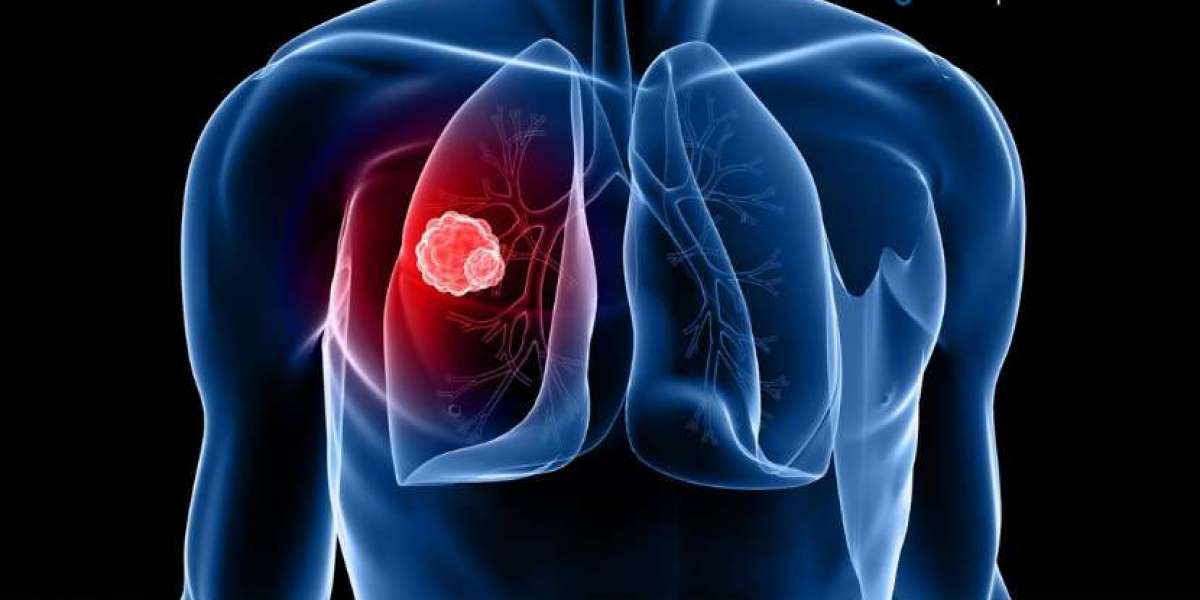Lung cancer is one of the leading causes of cancer-related deaths worldwide, making early detection critical for improving patient outcomes. According to the World Health Organization (WHO), lung cancer accounts for approximately 2.2 million new cases annually. The primary reason behind the high mortality rate is the late-stage diagnosis, where treatment becomes less effective. To address this, lung cancer screening has become a vital tool, leading to a significant rise in demand for innovative screening technologies.
In 2023, the global lung cancer screening market was valued at USD 2.5 billion, with increasing adoption of low-dose computed tomography (LDCT) scans being a major contributor. The market is projected to grow at a CAGR of 8.2%, reaching USD 5.1 billion by 2032. This growth is underpinned by technological advancements, public health initiatives, and increasing awareness of early detection methods.
2. Market Overview: Key Drivers Behind Growth
a. Rising Global Burden of Lung Cancer
The growing incidence of lung cancer, especially among smokers and those exposed to environmental pollutants, is one of the primary market drivers. The International Agency for Research on Cancer (IARC) estimates that lung cancer accounted for 18% of total cancer deaths in 2020. With increasing pollution levels, occupational hazards, and lifestyle factors, lung cancer cases are expected to continue rising, which in turn is propelling the demand for screening technologies.
b. Government Initiatives and Screening Guidelines
Several countries have introduced lung cancer screening programs aimed at high-risk individuals, particularly heavy smokers. In the United States, the U.S. Preventive Services Task Force (USPSTF) recommends annual LDCT screening for adults aged 50-80 who have a history of heavy smoking. Similar initiatives are being adopted in Europe and parts of Asia, significantly expanding the market for screening technologies. Increased funding and grants from governments to support public health campaigns further accelerate market growth.
c. Advancements in Screening Technologies
The market has seen significant innovation in screening technologies, particularly in low-dose computed tomography (LDCT), which has emerged as the gold standard for early lung cancer detection. LDCT offers a more accurate diagnosis while minimizing radiation exposure, making it safer for patients. Additionally, the development of artificial intelligence (AI)-based diagnostic tools has improved the accuracy and speed of detecting lung abnormalities, further fueling market expansion.
3. Deep Dive into Key Market Trends
a. Artificial Intelligence and Machine Learning in Lung Cancer Screening
AI is revolutionizing the lung cancer screening landscape by enhancing diagnostic accuracy and reducing the burden on healthcare providers. AI-driven algorithms analyze high-resolution CT scans to detect even the smallest nodules, which could be early signs of lung cancer. These AI tools help radiologists by highlighting potential abnormalities, reducing the time to diagnosis and improving the chances of early intervention.
One notable example is Nuance Communications, a Microsoft subsidiary, which has integrated AI into its diagnostic imaging platform. AI helps reduce false positives, a common issue in lung cancer screening, leading to fewer unnecessary procedures and patient anxiety.
b. Shift Towards Biomarker-Based Non-Invasive Screening
Another significant trend is the rise of biomarker-based screening methods, which offer a non-invasive alternative to traditional imaging techniques. Biomarkers are molecular indicators found in blood, sputum, or urine that can suggest the presence of lung cancer. Liquid biopsies, for instance, detect circulating tumor DNA (ctDNA) or other cancer-related biomarkers. These tests are less invasive, more comfortable for patients, and can be performed more frequently, making them ideal for high-risk populations.
Companies like Miltenyi Biotec are leading this trend by investing heavily in research and development (R&D) to enhance biomarker-based lung cancer detection. While still in the early stages, this method is expected to complement or even replace imaging-based screening in the coming years.
c. mHealth Platforms and Remote Monitoring
The emergence of mobile health (mHealth) platforms is providing new avenues for lung cancer screening. These platforms enable remote monitoring of lung health, allowing high-risk individuals to track symptoms and get reminders for regular screenings. Eon Health, for example, offers a comprehensive suite of digital tools that streamline the lung cancer screening workflow. These platforms also integrate patient data analytics to personalize care and improve outcomes.
mHealth is particularly beneficial for patients in rural areas or regions with limited access to healthcare facilities, as it enables them to undergo remote consultations and receive early diagnostic alerts.
4. Competitor Landscape: Detailed Competitor Analysis
Patent Analysis and Intellectual Property Landscape
A significant factor driving competition in the lung cancer screening market is the intellectual property (IP) related to diagnostic technologies. Leading companies, such as Canon Medical Systems and GE Healthcare, hold patents for advanced imaging technologies, including next-generation LDCT scanners. These patents provide them with a competitive edge, protecting their proprietary innovations and allowing them to dominate the market.
Collaborations and Partnerships
Collaborations between medical device companies and AI startups are shaping the future of lung cancer screening. For instance, Medtronic Plc has partnered with AI firms to enhance the diagnostic capabilities of its screening devices. Similarly, Volpara Solutions collaborates with hospitals to develop AI algorithms that improve lung cancer detection accuracy.
Clinical Trials and Funding
The lung cancer screening market is witnessing a surge in clinical trials focused on validating new screening technologies, including biomarker-based tests and AI tools. Additionally, companies are securing significant funding from private investors and public health organizations to accelerate R&D. Penrad Technologies Inc., for instance, has been at the forefront of clinical research in lung cancer detection and has received grants to further its innovations.
5. Regional Insights: Growth Opportunities Across Global Markets
a. North America
North America continues to lead the lung cancer screening market, accounting for the largest market share. The region's well-established healthcare infrastructure, high screening rates, and government-sponsored screening programs make it a key driver of market growth. The adoption of advanced technologies such as AI-driven imaging and biomarker-based screening methods is particularly strong in the U.S. and Canada.
b. Europe
The European lung cancer screening market is expected to grow rapidly, driven by rising cancer awareness and healthcare expenditure. Countries like Germany, the U.K., and France are implementing large-scale screening programs targeting high-risk populations. In addition, European governments are providing financial incentives for early cancer detection, further propelling the market.
c. Asia-Pacific
The Asia-Pacific region presents significant growth opportunities, with increasing healthcare investments and the rising prevalence of lung cancer. Countries such as China, India, and Japan are seeing a surge in demand for advanced diagnostic tools. The region is also witnessing a growing interest in AI-based diagnostic technologies, as well as the adoption of cloud-based healthcare solutions for remote diagnostics.
6. Future Outlook: What to Expect in the Coming Decade
The lung cancer screening market is poised for substantial growth over the next decade, with several key factors shaping its future:
- AI-Driven Automation: As AI becomes more deeply integrated into diagnostic workflows, lung cancer detection is expected to become more automated, reducing the need for human intervention and minimizing errors.
- Personalized Screening: Advances in genomics and precision medicine are likely to lead to more personalized screening approaches based on a patient's genetic risk factors.
- Cost Reduction: As technologies mature, the costs associated with lung cancer screening are expected to decrease, making screening more accessible to low- and middle-income regions.








